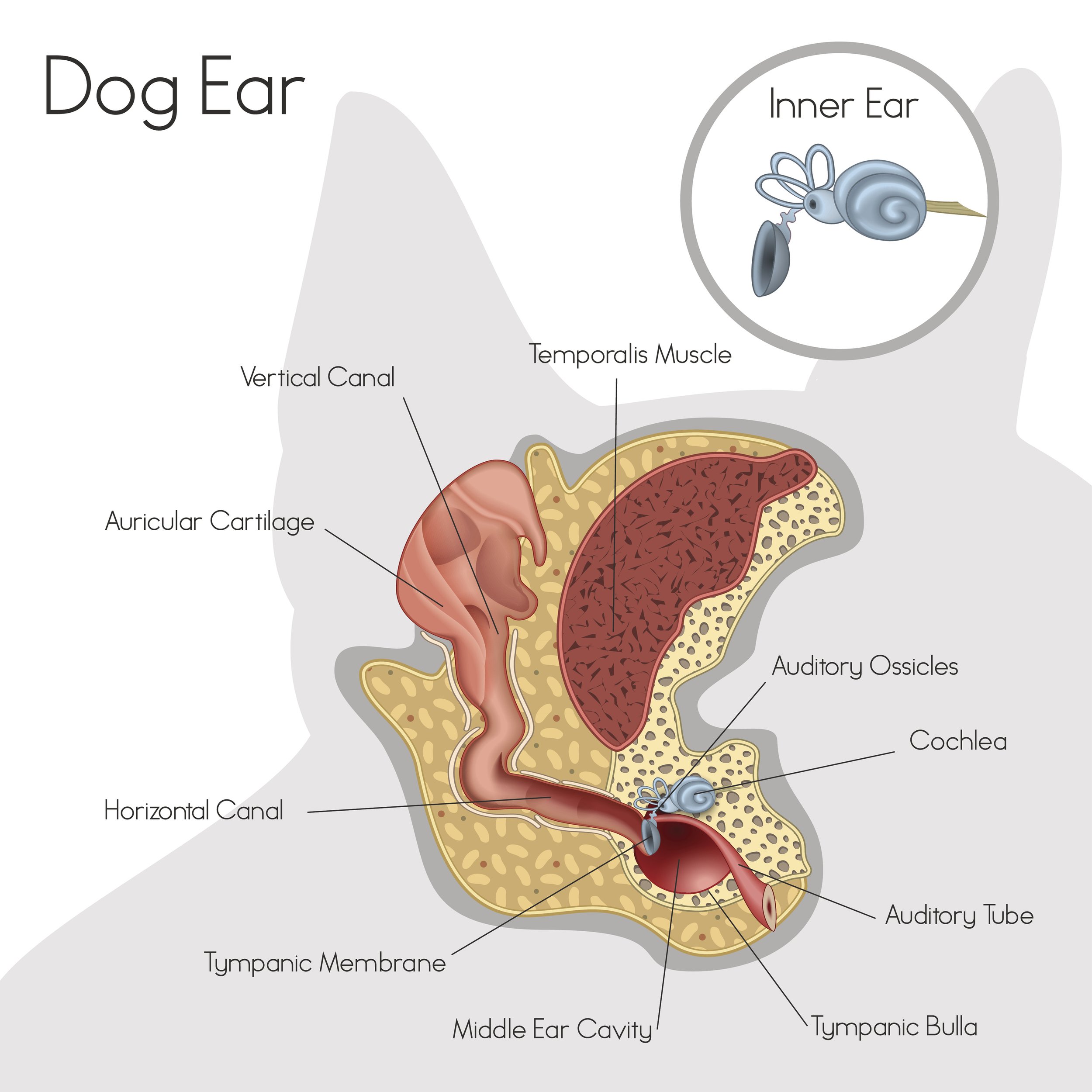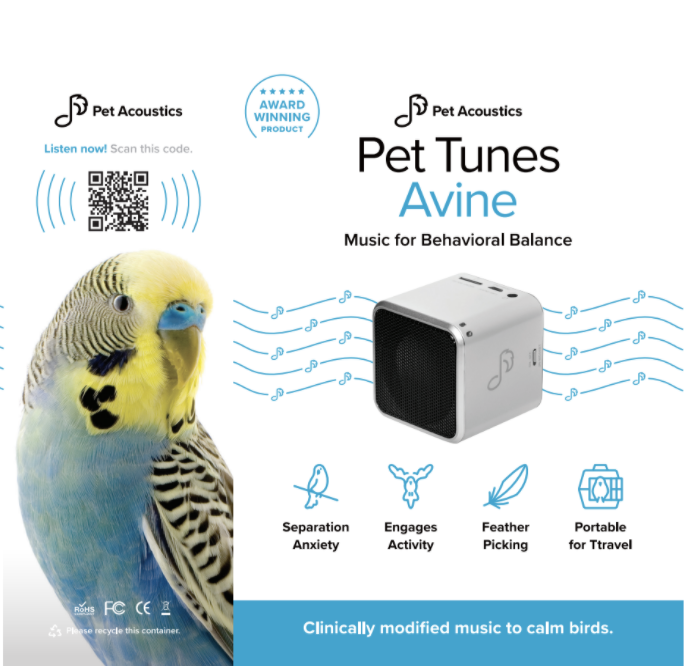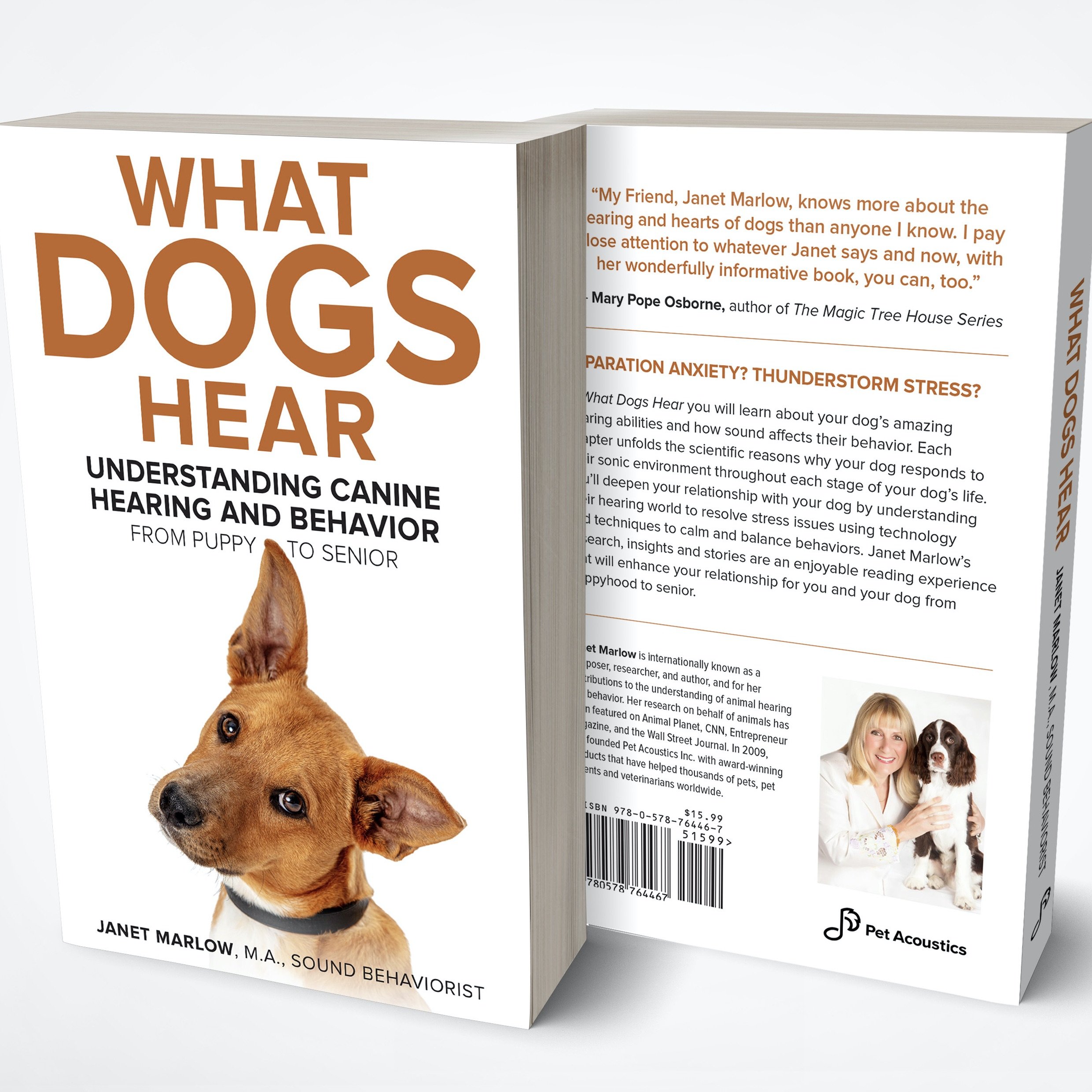We love our dogs and cats. We love everything about them, the feel, their touch, their funny personality, the calm and active times we share daily. There are many levels of relationship that we cherish throughout their lives as we care for their well being. The last week in September is Pet Acoustics’ spotlight on pet hearing health. National Pet Hearing Health Week goes from September 26 to 30th. Each day we are asking you to observe your pet’s hearing ability as part of their health at any age. In our research over the past twenty five years, we’ve learned many aspects of what entails pet hearing health. Pet Acoustics now offers the first FREE Home Pet Hearing Test for dogs or cats to know for sure if your pet has full or partial hearing range. Learn more.
One pet parent said “ I just whisper “treat” and if my dog comes running I know they have hearing”. We’ve learned that knowing if your pet has hearing health requires more care and attention and that pet hearing has three levels of responses, high, medium and low ear/brain triggers. Each of these mean different triggering responses to animals. Simply put, human and animal health parallel. Human babies start with extraordinary hearing, the best the human ear can do, from the lowest vibrations to the highest sounds. As we age, our hearing diminishes in capacity and in old age, we lose more and more ability to hear. This, of course, varies form person to person but generally this is the case. In dogs and cats, the same range from birth to senior applies to our animal friends. This is why it’s important to acknowledge that your pet will be losing some hearing ability as they age. Most of the time, we recognize that our dog or cat is not hearing after the fact of hearing loss, when they no longer respond to our call, or have a new level of anxiety as this sense diminishes. So keeping track of your pet’s hearing ability throughout their life is a new and important awareness. which is what our Pet Acoustics National Pet Hearing Health Week is all about. Take time once a year to know the status of your pet’s hearing as a check-up.
Senior to geriatric dogs, who fall in the age range of seven to fourteen years or older, experience hearing loss as they age. The physical cause is due to degenerative changes in the nerves inside the ear. Loss of hearing is very gradual, so as a pet parent you may not notice the change right away. The common form of deafness in pets is age-related hearing loss, referred to as ARHL. Most experience some degree of ARHL, beginning in the third trimester of life. ARHL begins by affecting the middle to high frequency range of sounds but eventually encompasses the entire range of frequency hearing ability by the geriatric stage.
For seniors, acknowledging their hearing loss is an important step to helping them navigate a new life stage. When our pets have pain or have an illness, pets often become stoic, not showing feelings of pain. Fortunately, when they’re in our care, we can be on the lookout for signs of hearing loss. Perhaps your pet no longer comes when you whistle, shows changes in daily behaviors, has an increased startle reflex specifically to touch, creates a louder than usual bark to get your attention, increases sleep time or has general apathy. When you have suspicions that there is something wrong with your pet’s hearing, take her to the veterinarian for evaluation and possible treatment.
Veterinary check up
Your veterinarian will observe your pet’s hearing ability. They’ll likely check to see if your pet responds to sounds outside their field of vision and take note if your pet has involuntary flicking or twitching of the ears, called-Pryor’s reflex-in response to sound.
BAER Hearing Test- A veterinary procedure is an electro-diagnostic test used to evaluate the hearing of dogs, cats and other. domestic animals. It evaluates the components of the external ear canal, middle/inner ear cavities, cranial nerve and selected areas of the brainstem.
Pet Acoustics Home Pet Hearing Test is an easy, hands-on way to observe and record if your pet has full hearing or may have partial hearing or hearing loss. We’ve simplified the science of pet hearing into key ranges; high, mid, and low frequency hearing. This natural method includes animal vocalizations that are familiar to your pet. After conducting the test, you will know better if your pet hears all three levels or may have hearing loss.
How it works
Sign up on PetAcoustics.com to start the free Pet Acoustics Home Pet Hearing Test
Click on each audio test
Mark your pet’s observable reaction after playing each sound.
The survey test takes one minute to complete.
You’ll be emailed the test results which you can share with your veterinarian.







































